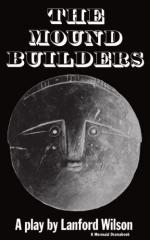Mound regions.
The mounds have long been known as occurring in Central America, in Mexico, and along the whole extent of the Mississippi valley from the Gulf of Mexico to the great lakes. Our Northwest has, however, been neglected in the accounts of the mound-bearing region. Along our Red River I can count some six or eight mounds that have been noted in late years, and from the banks having been peopled and cultivated I have little doubt that others have been obliterated. One formerly stood on the site of the new unfinished Canadian Pacific Hotel in this city. The larger number of those known are in the neighborhood of the rapids, 16 or 18 miles below Winnipeg where the fishing is good. In 1879 the Historical Society opened one of these, and obtained a considerable quantity of remains. It is reported that there are mounds also on Nettley Creek, a tributary of the lower Red River, also on Lake Manitoba and some of its affluents. During the past summer it was my good fortune to visit the Rainy River, which lies some half way of the distance from Winnipeg to Lake Superior. In that delightful stretch of country, extending for 90 miles along the river there are no less than 21 mounds. These I identify with the mounds of Red River. The communication between Red and Rainy River is effected by ascending the Red Lake River, and coming by portage to a river running from the south into Rainy River. Both Red and Rainy River easily connect with the head waters of the Mississippi. Our region then may be regarded as a self-contained district including the most northerly settlements of the strange race who built the mounds. I shall try to connect them with other branches of the same stock, lying further to the east and south. For convenience I shall speak of the extinct people who inhabited our special region as the Takawgamis, or farthest north mound builders.
Mound varieties.
The thirty or forty mounds discovered up to this time in this region of the Takawgamis have, so far as examined, a uniform structure. Where stone could be obtained there is found below the surface of the ground a triple layer of flat limestone blocks, placed in an imbricated manner over the remains interred. In one mound, at the point where the Rainy Lake enters the Rainy River, there is a mound situated on the property of Mr. Pither, Indian agent, in which there was found on excavation, a structure of logs some 10 feet square, and from six to eight feet high. In all the others yet opened the structure has been simply of earth of various kinds heaped together. It is possible that the mound containing the log erection may have been for sacrifice, for the logs are found to have been charred. One purpose of all the mounds of the Takawgamis was evidently sepulture; and in them all, charcoal lumps, calcined bones and other evidences of fire are found. It would seem from their position that all the mounds of this region were for the purpose of observation as well as sepulture. The two purposes in no way antagonize. For the better understanding of the whole I have selected the largest mound of the Takawgamis yet discovered, and will describe it more minutely.




